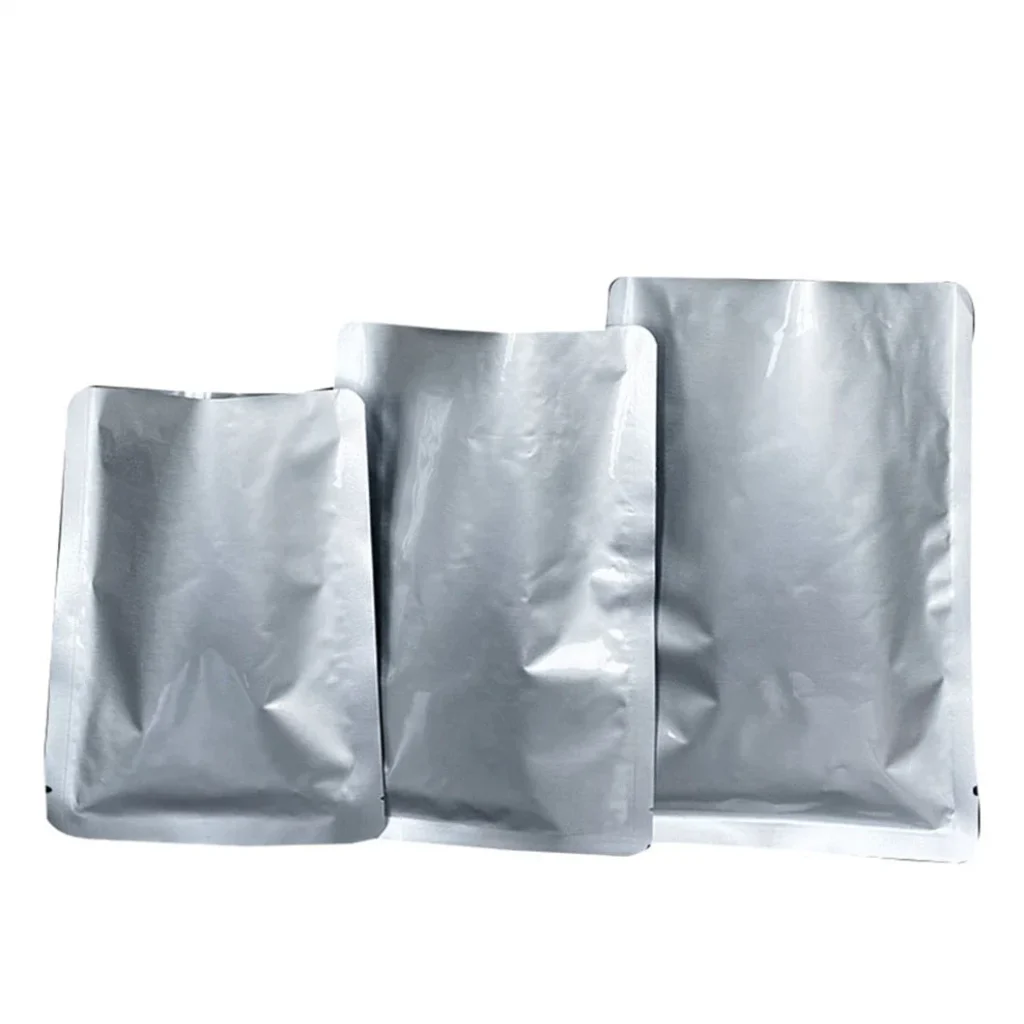Analysis of Heat Sealing Issues in Aluminum Foil Bags and Optimization Measures:
1. Insufficient Heat Bar Temperature and Variations in Composite Film Thickness
During the production of aluminum foil bags, heat sealing issues are often closely related to variations in the thickness of the composite film. For aluminum foil bags from the same batch, if the standard composite film thickness is 80 μm, the actual thickness may fluctuate between 72 μm and 88 μm, with a maximum deviation of 16 μm. Such thickness variations directly impact heat seal temperature settings and sealing effectiveness. Increased film thickness prolongs heat transfer, necessitating longer sealing times or higher temperatures to ensure proper sealing.
However, elevated temperatures may cause uneven local pressure distribution—particularly when the film is thicker at the edges and thinner in the center. Slightly exceeding temperature or pressure limits can easily lead to localized leakage. Therefore, controlling composite film thickness deviation within acceptable ranges is crucial for resolving this issue. To ensure reliable sealing, it is recommended to take samples across different temperature ranges, covering both vertical and horizontal sections of the mold, to identify the optimal solution for localized sealing issues.

2. Equipment and Operational Issues
Problems with aluminum foil bag heat-sealing equipment can lead to poor seals. Specific issues include foreign objects in the heat sealing film clamps, insufficient sealing pressure, or rough mold surfaces. These factors can cause localized pressure deficits, adversely affecting the sealing outcome. Additionally, uneven temperature distribution across the sealing mold or improper parallel alignment during installation can cause leaks. To address these issues, conduct regular equipment inspections to ensure mold flatness, uniform pressure, and stable temperatures. Remove debris from clamps and molds while maintaining operational precision.
3. Packaging Material Issues
The heat-sealing performance of foil pouches may also be affected by the packaging material itself. For instance, corona damage on the film surface or excessive residual release agents in the heat-seal layer can cause poor sealing. Furthermore, surface characteristics of the film (such as smoothness and adhesion) impact sealing quality. Therefore, materials must undergo rigorous testing and selection to ensure they meet heat-sealing requirements.

4. Structural Issues
Structural defects in aluminum foil bags can cause poor sealing, particularly in critical areas like the insertion section, back panel, and bottom. These areas often exhibit incomplete resin fusion, resulting in weak seals. Such problems frequently occur at the overlapping edges of four-layer rear-sealed bags or side-sealed bags, or at the top seal. Localized thickening of the film can also lead to poor heat sealing. Solutions include increasing sealing temperature, applying higher pressure, or implementing localized reinforcement to ensure reliable seals and prevent leakage.
Can aluminum foil bags be printed?
Aluminum foil bags are printable, with results comparable to standard transparent bags. Print quality primarily depends on the printer's ink, equipment, and techniques rather than the bag material itself. The effectiveness of aluminum foil packaging is influenced by multiple details. Improper folding methods may compromise the bag's functionality.
Classification of Aluminum Foil Bag Materials
Aluminum foil bags are categorized into pure aluminum bags and metallized bags. Although both contain aluminum, their production processes differ. Aluminized bags feature aluminum deposited onto a film layer via vacuum sputtering, while pure aluminum bags are made from solid aluminum foil. In terms of freshness preservation, pure aluminum bags outperform aluminized bags but come at a higher cost.

Printing Process for Aluminum Foil Bags
The printing process for aluminum foil bags differs from other packaging bags. Due to their metallic texture, uniform ink is typically used for printing. Another method involves printing patterns on a white base layer, where the white ink layer must fully cover the foil surface to prevent poor print quality.
Advantages and Disadvantages of Aluminum Foil Bags
Aluminum foil bags are a premium packaging material, particularly suited for meat products and precision instruments. They offer excellent moisture-proof, waterproof, and light-blocking properties.
However, aluminum foil bags also have drawbacks. Although aluminum foil blocks light, it is prone to tearing, creating a potential risk for bag damage. Therefore, folding aluminum foil bags should be avoided to prevent breakage and leakage. If torn, the contents inside may be compromised, failing to achieve the intended freshness preservation.
Consequently, whether during use or storage, folding aluminum foil bags should be minimized to ensure their proper functionality.
Wanle Package specializes in producing high-quality Aluminum Foil Bags. Contact us now to enjoy excellent service and customized solutions!
